Configuring Billing Infrastructure
This page explains how to configure billing infrastructure according to CSP-specific parameters.
The steps included on this page should be completed by an administrator in your organization.
Functionalities
To change the infrastructure's configuration, click the Definition tab. The buttons in this tab have the following functions:
- Save Billing saves the current configuration parameters.
Whenever you change any field in the infrastructure configuration form, use this button to ensure your changes aren't lost. - Delete Configuration deletes the current billing infrastructure configuration.
If you use this button, the infrastructure configuration will not appear in your list of configured infrastructures. - Deploy Infrastructure provisions the billing infrastructure.
- Destroy Infrastructure de-provisions the billing infrastructure.
- Force unlock releases the billing infrastructure from a locked state so the infrastructure can be re-deployed.
This button is useful if the infrastructure provisioner fails during the deployment process. For more information, see Troubleshooting below.
To see the code version of the configuration settings, click the JSON tab.
To change the infrastructure's name, click the Properties tab.
There is also an Imported option that works for all CSPs. Use this option if you have already provisioned or configured billing infrastructure in your CSP account and want ACTIVATE to access and process your billing data.
ACTIVATE does not manage imported billing infrastructure. Our system assumes this infrastructure has already been provisioned and is ready for use. Imported billing infrastructure cannot be provisioned or destroyed.
If you want to delete a configuration from the list in Infrastructure, you first need to deprovision the infrastructure on its configuration page. If you don't, the infrastructure will still exist in your CSP account.
AWS Billing Infrastructure
ACTIVATE Provisioned AWS Billing Infrastructure
Select the Region that you want your billing infrastructure to be deployed in. For more information about Regions, see the AWS documentation.
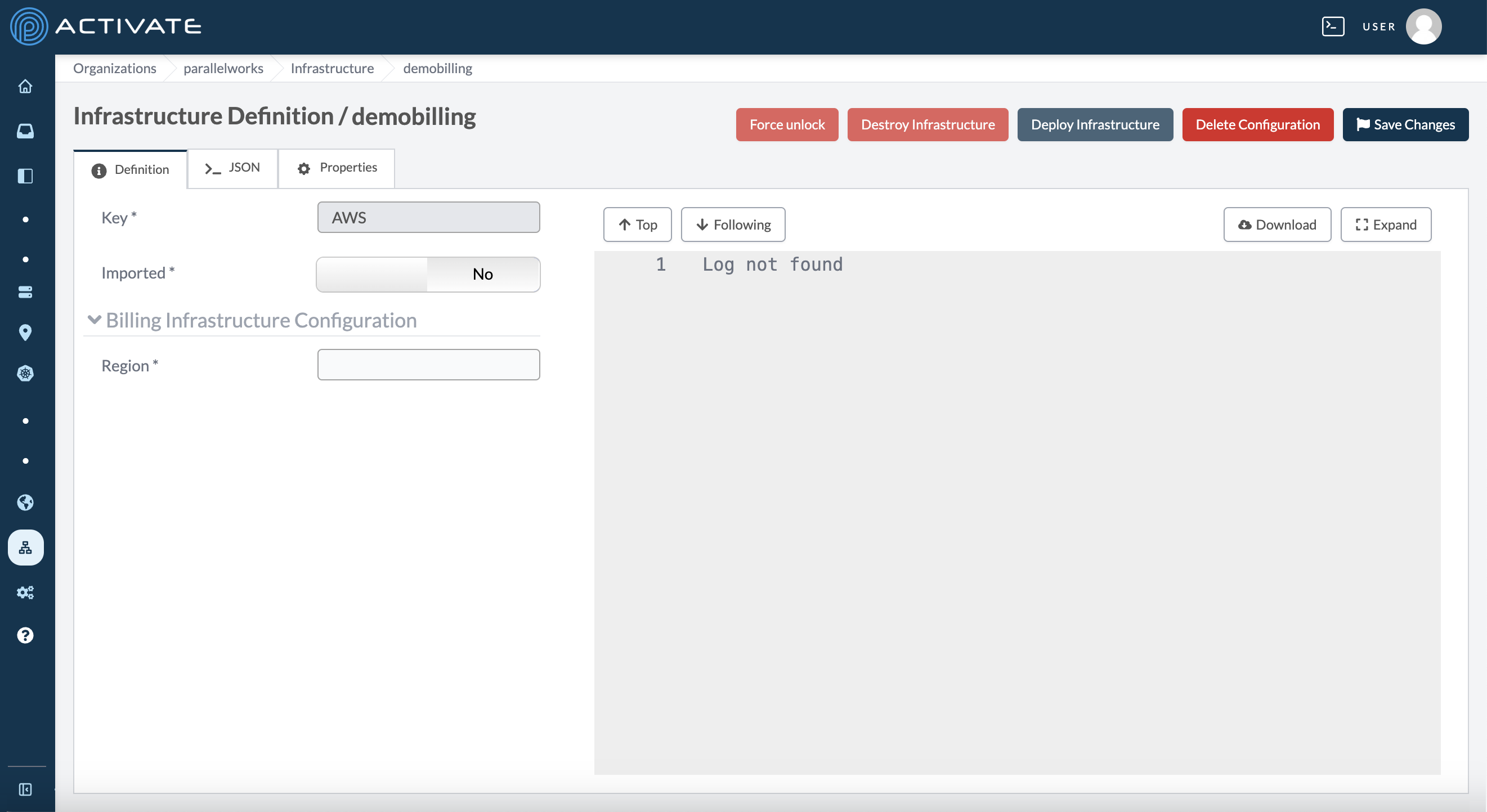
Imported AWS Billing Infrastructure
Toggle the Imported button to Yes. Enter your S3 Bucket Name.
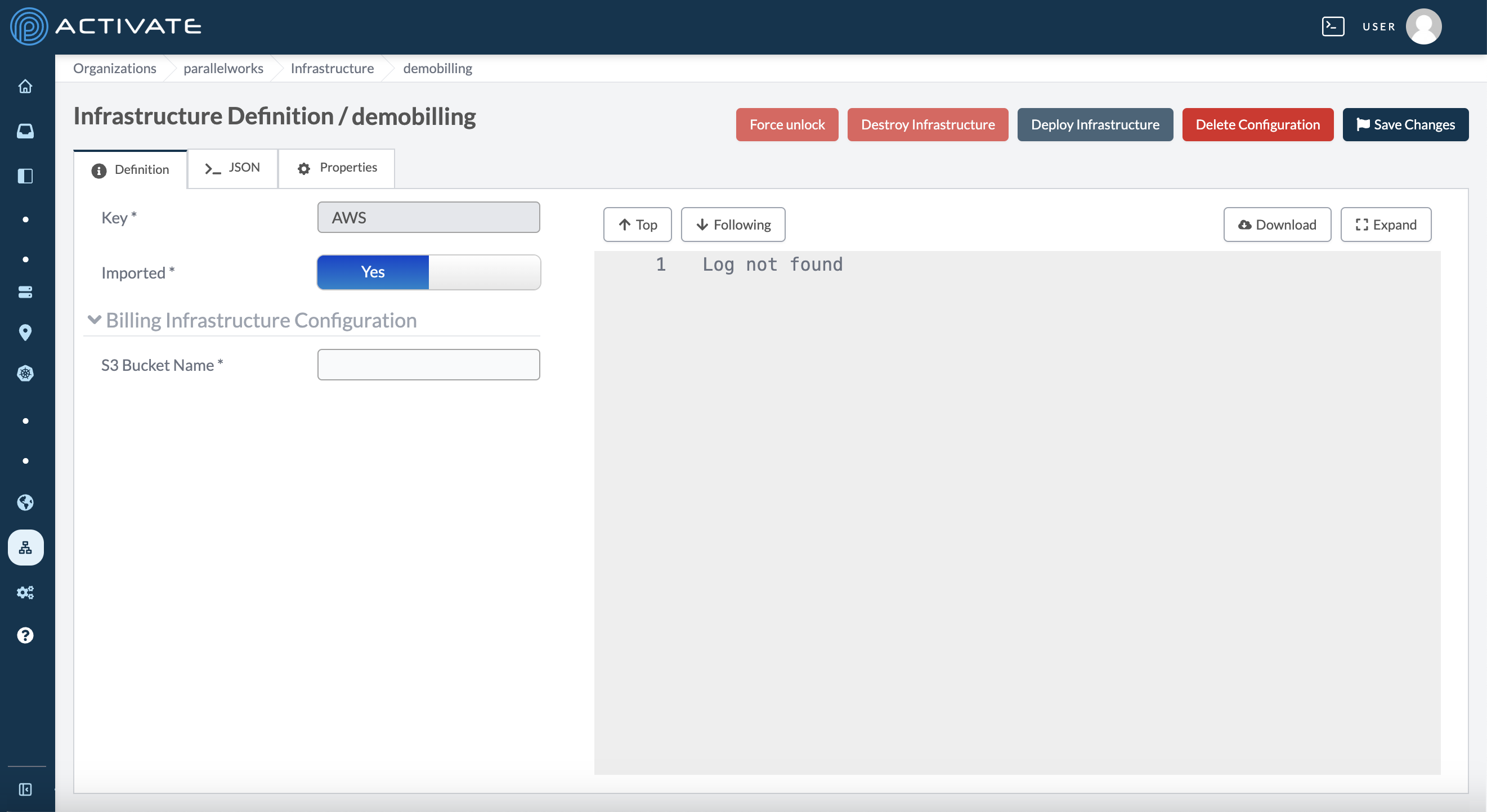
ACTIVATE manages billing data by attaching tags to the provisioned cloud resources. To enable the necessary tags in your AWS billing data, you'll need to activate custom tags in your AWS account.
Please see the AWS documentation for the required permissions to complete the steps listed below.
-
Log in to the AWS Management Console.
-
Navigate to the Billing page.
-
Click on Cost allocation tags.
-
In the tab for User-defined allocation tags, activate these tags:
DateGroupIDNameOrganizationIDPoolProjectSessionSessionIDUser
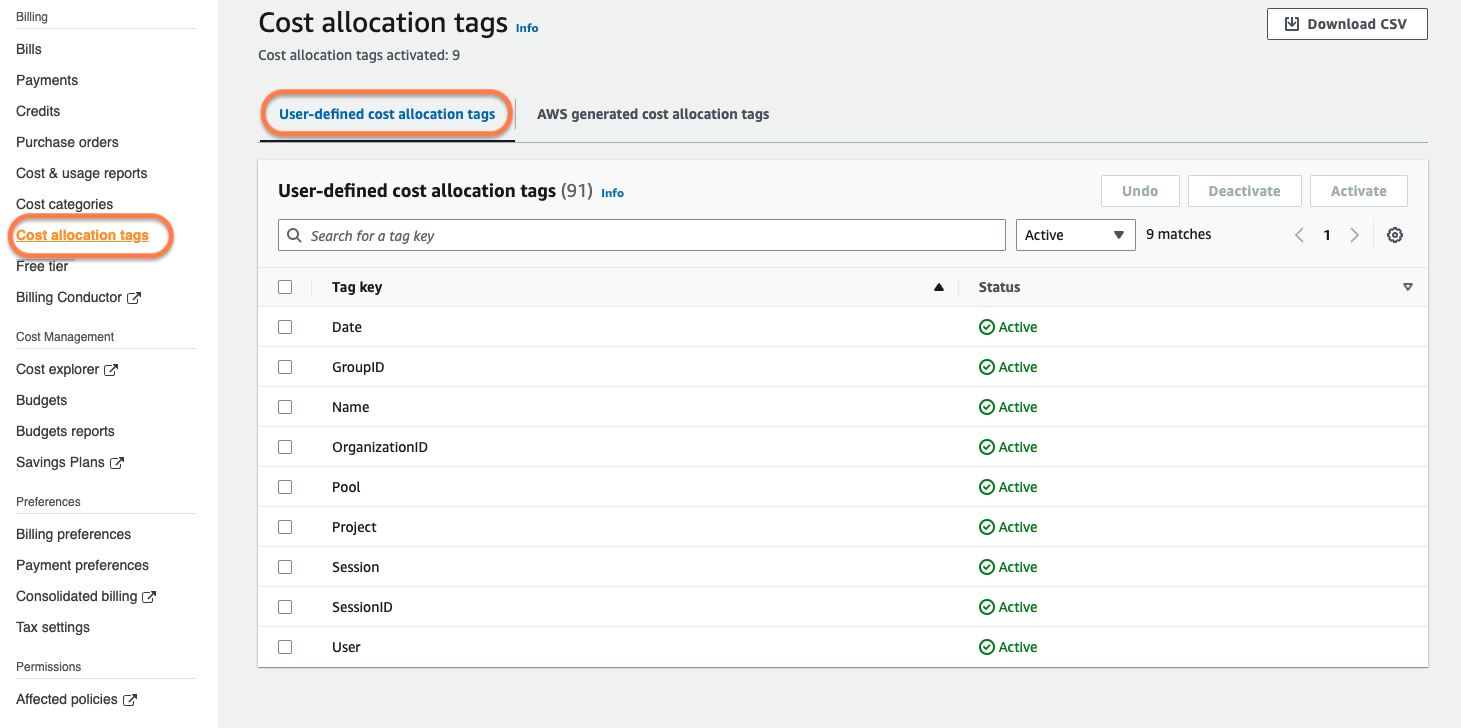
Azure Billing Infrastructure
ACTIVATE Provisioned Azure Billing Infrastructure
Select the Region that you want your billing infrastructure to be deployed in. For more information about Regions, see the Azure documentation.
Toggle the Cost Management Export button to Yes if you have not yet registered the Microsoft.CostManagementExports provider in your Azure subscription.
If you toggle the button to Yes but have already registered the Microsoft.CostManagementExports provider, the provisioner will fail because Azure will deny the new registration attempt.
For more details about providers, please see the Azure documentation.

Imported Azure Billing Infrastructure
Toggle the Imported button to Yes. Enter the Storage Account name and the Blob Container name that you've configured to store your Azure billing data.
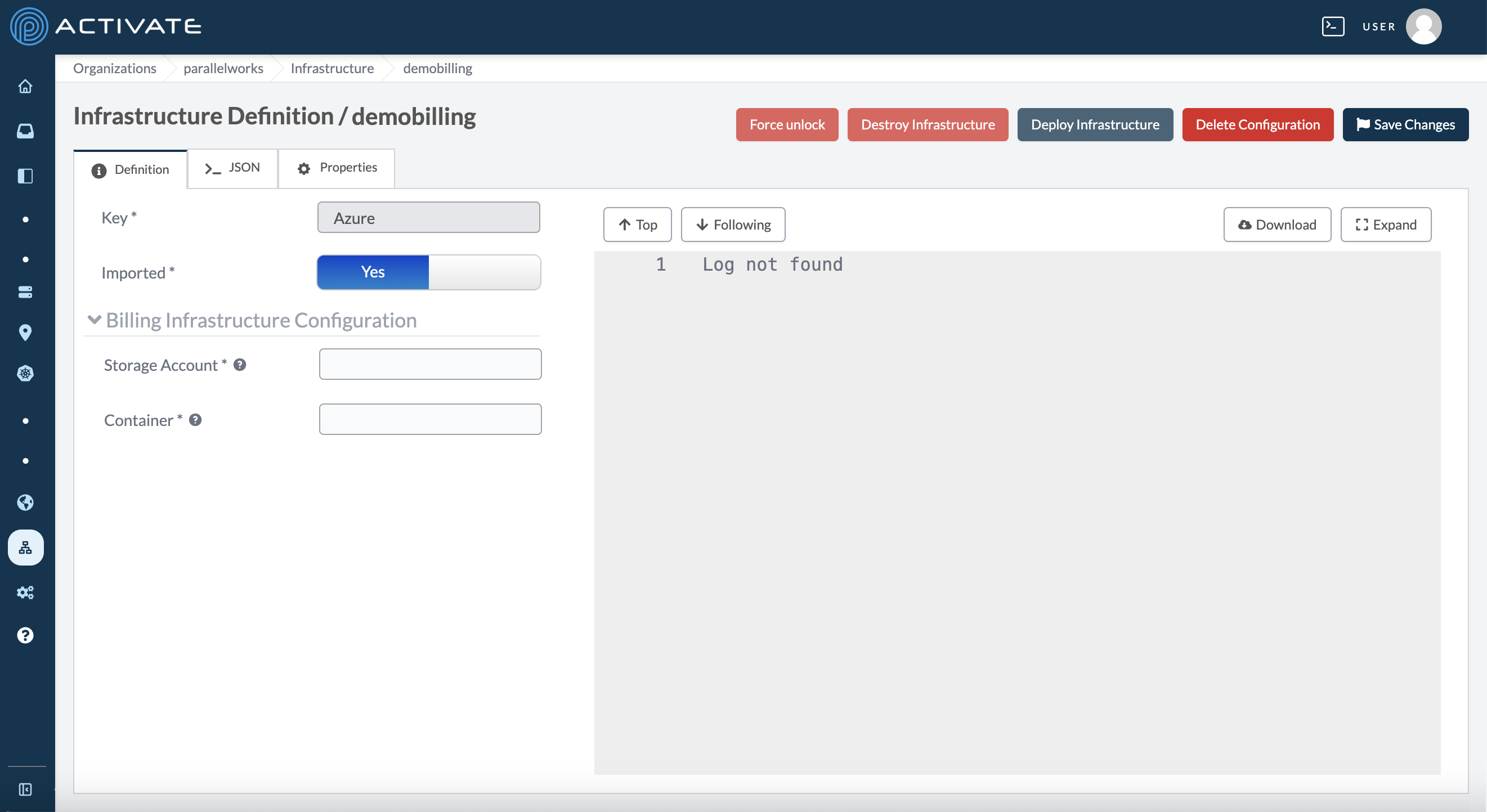
Google Billing Infrastructure
ACTIVATE Provisioned Google Billing Infrastructure
Select the Region that you want your billing infrastructure to be deployed in. For more information about Regions, see the Google documentation.
In the Project field, enter the Project ID of the project that you want this billing infrastructure to be deployed in. Your Google credential (key) will need to have certain permissions enabled in this Project ID. For more information about these required permissions, see Preparing Google.
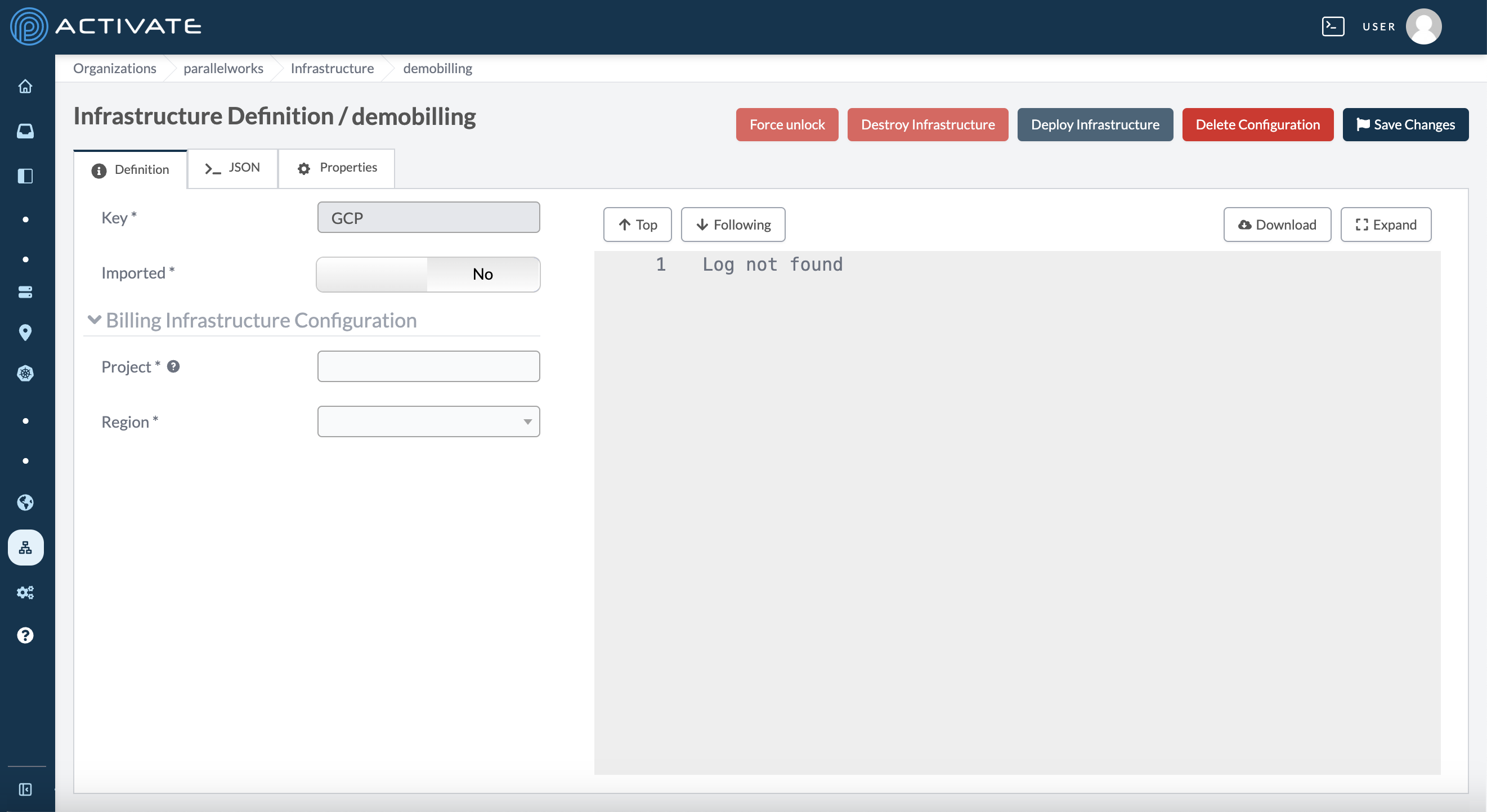
At the time of writing this page, Google does not have an automated option to export billing data to the provisioned BigQuery dataset, so this task must be performed manually.
You will need the role Billing Exporter in your Billing Account to complete the steps listed below.
-
Log in to the Google Cloud Console.
-
Navigate to the Billing page.
-
Click on Billing Export and select Detailed usage cost.
-
For Project, choose the project that you provisioned the BigQuery Dataset in.
-
For Dataset, choose the BigQuery dataset that has just been provisioned. The dataset name will have the format of
<yourorganization\>billing. -
Click Save.
For more information, please see Step 5 of the Google guide on setting up cloud billing.
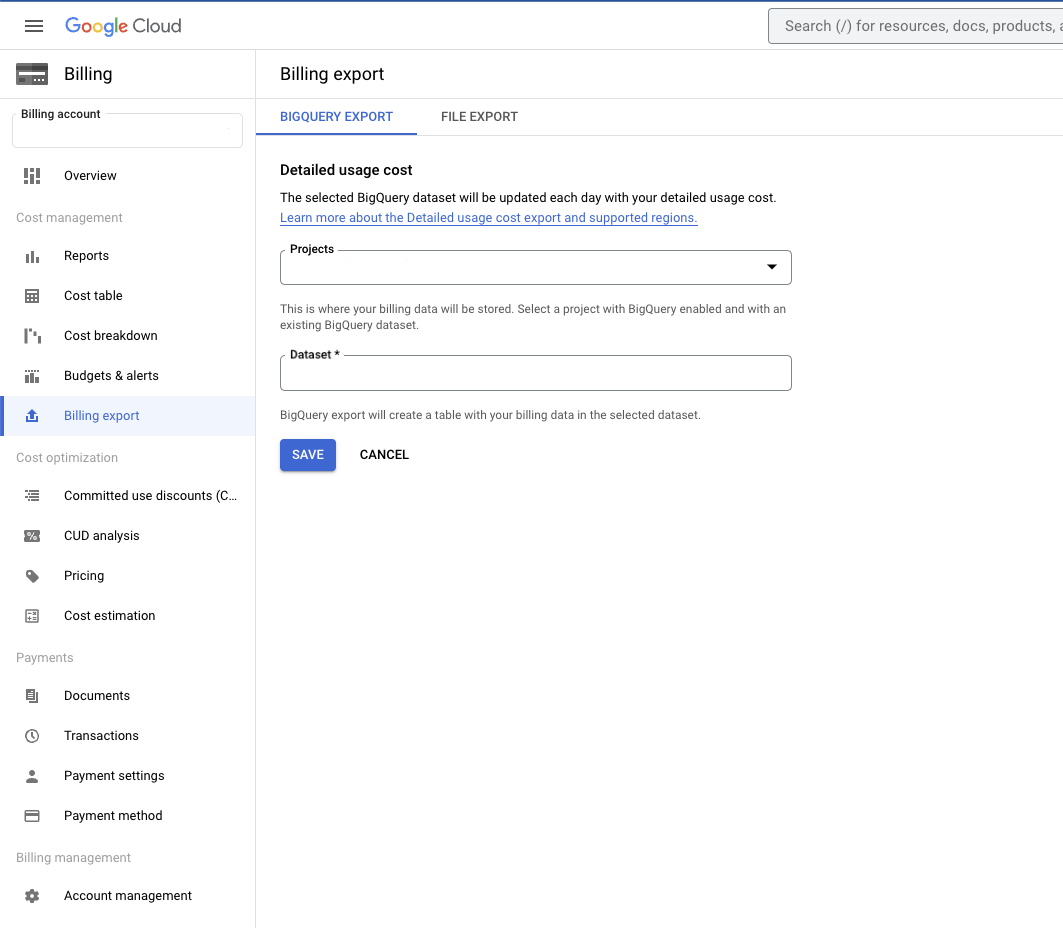
Imported Google Billing Infrastructure
Toggle the Imported button to Yes. Enter the BigQuery Dataset name and the Project ID that the dataset was provisioned in.

Troubleshooting
After clicking Deploy Infrastructure, you won’t be able to edit the configuration settings while the infrastructure is being built. All fields and buttons will be grayed out except for Destroy Infrastructure and Force Unlock.
If the Provisioning Log displays any errors in red, you can retry the provisioning process by clicking Destroy Infrastructure, which will delete all of the provisioned elements. Then you can click Deploy Infrastructure to retry the provisioning process.
If the errors persist, you can click Force Unlock. Doing so will allow you to edit the configuration settings or delete the infrastructure with Delete Configuration.
Please monitor the Provisioning Log and wait for the provisioning process to finish before attempting to Force unlock and retry Deploy Infrastructure or Destroy Infrastructure.
Do not Force unlock and Deploy Infrastructure while the provisioning process is still running; doing so will fail and cause unwanted issues.
If the errors persist after trying to redeploy or reconfigure the infrastructure, please contact us.